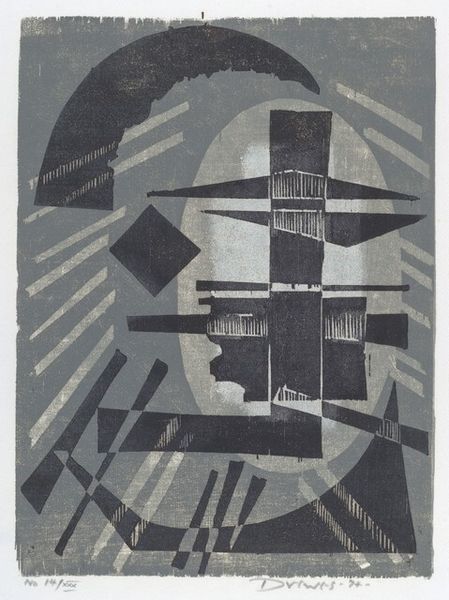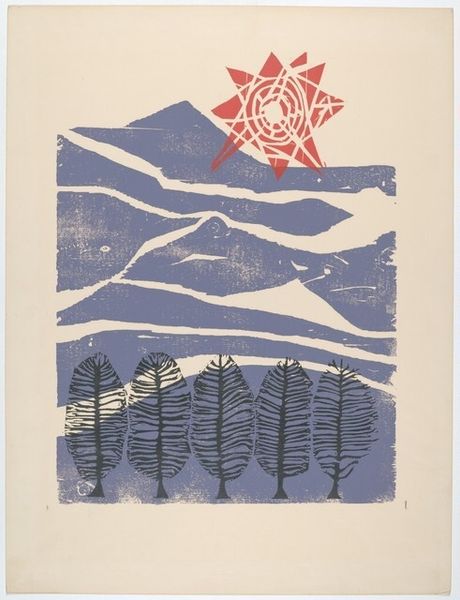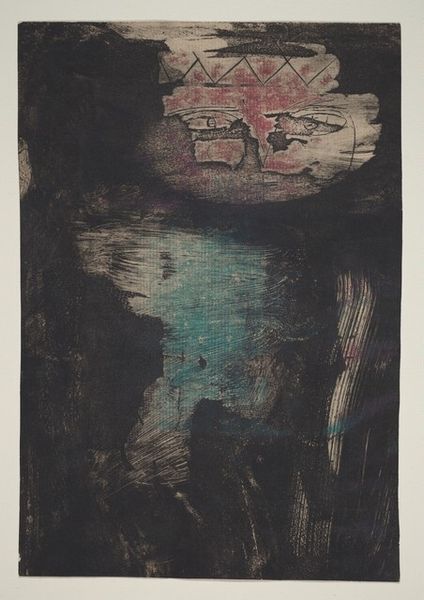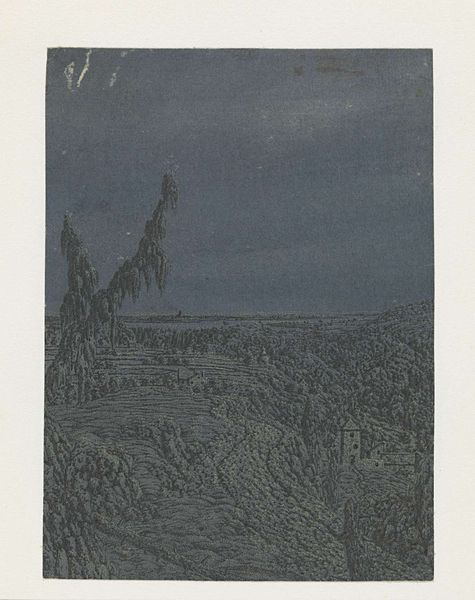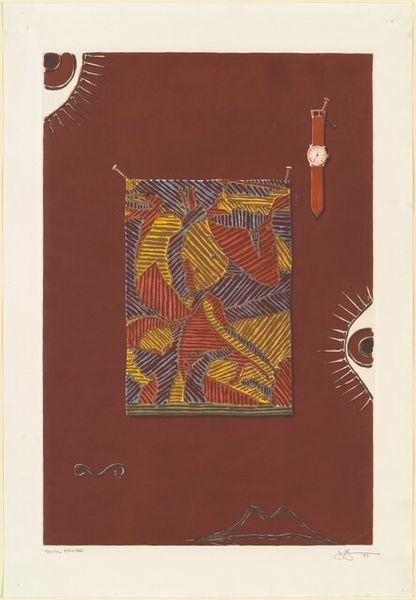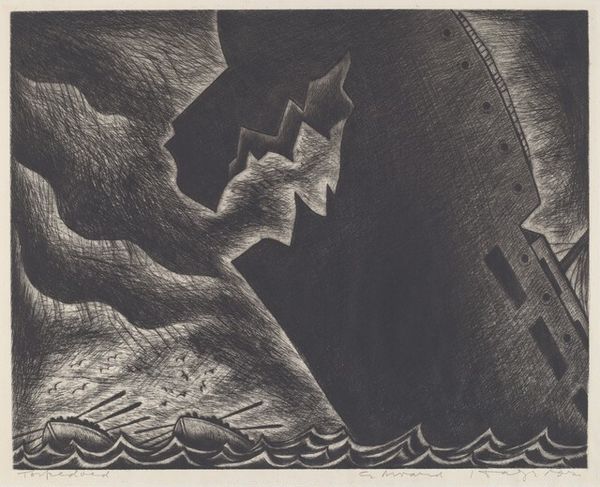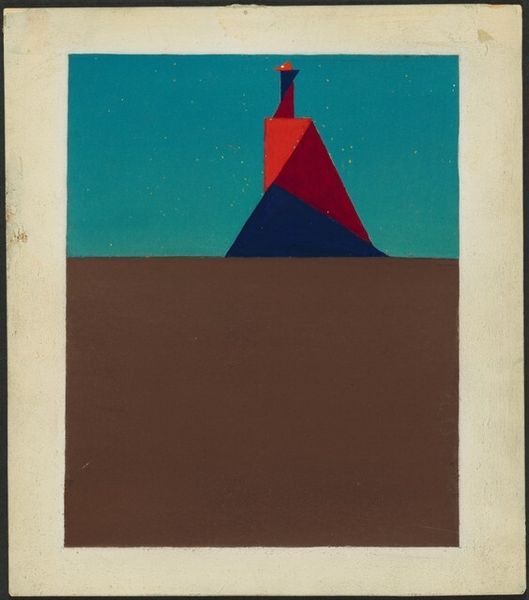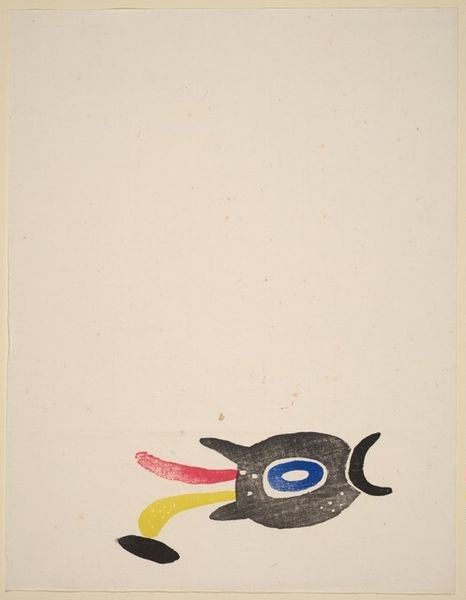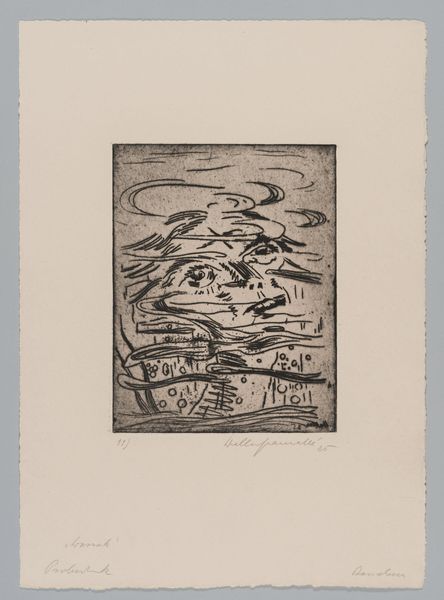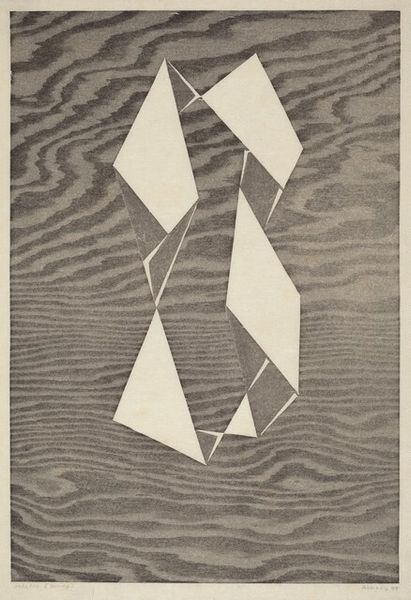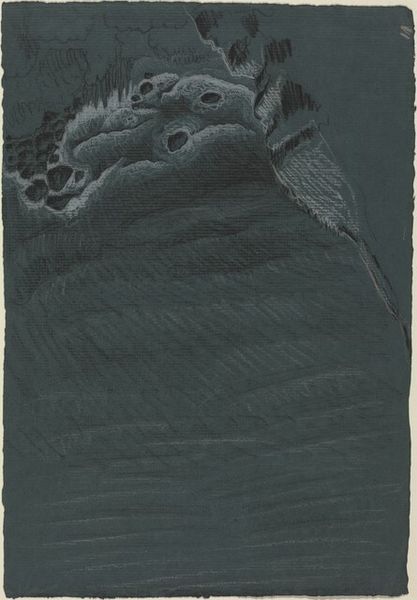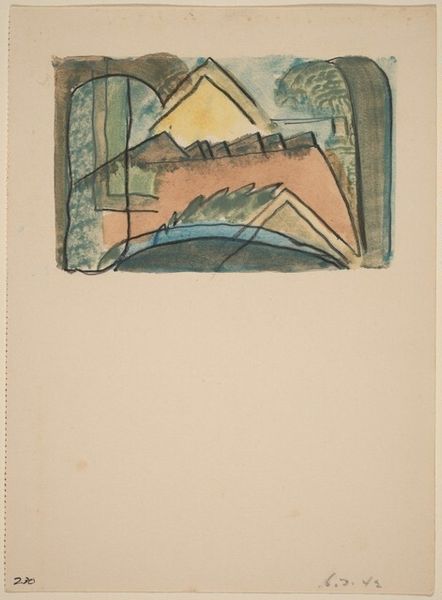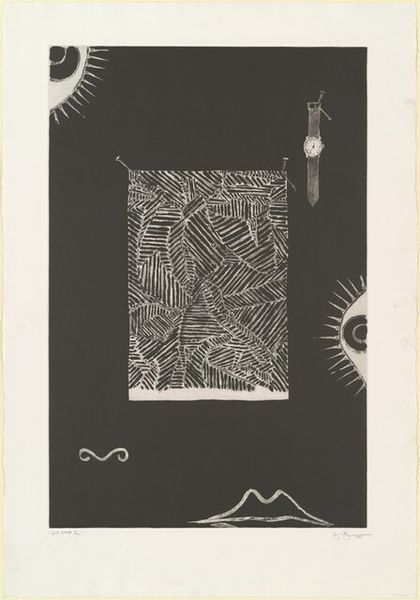
mixed-media, print
#
mixed-media
#
water colours
#
muted colour palette
# print
#
colour-field-painting
#
geometric-abstraction
#
abstraction
#
watercolour illustration
#
modernism
Copyright: National Gallery of Art: CC0 1.0
Curator: This intriguing print is Gottfried Honegger’s "Germinating," created in 1955 using mixed media. What strikes you first? Editor: The earthiness of the material palette is immediate. I see deep browns, a brooding blackness, muted tones—it's as if I am staring into fertile, dark soil. Curator: Honegger, throughout his career, explored the intersection of geometric abstraction and color-field painting. How does this inform our reading of “Germinating” in light of post-war identity? Editor: The layering of materials seems deliberate, almost excavating. You can see the printing process: layering, registration marks visible. It points towards labor, toward process. There's an industrial feel even amidst the organic title, which plays against the expectation. Curator: The title suggests potential, the very beginning. It is created during a time of great political upheaval in Europe following WWII, the idea of a re-birth resonates profoundly with the identity crisis, wouldn't you say? How might it serve as a statement about renewal, both personally and socially? Editor: Absolutely. And the geometry, to me, doesn't contradict that reading, but complicates it. The way it’s built—precise shapes, clearly defined—speaks to the control necessary to coax something to grow. The central form in the composition looks almost architectural as if creating structure. The reddish rectangle in the center feels warm, it represents an embryonic light, as the center or seed of this germination? Curator: Precisely! Honegger, as a Swiss artist, situated himself in a unique position relative to this history and his intersectional positionality becomes clear when thinking about his geometric symbols and what that language meant as a beacon for utopian modernism as Europe rebuilds, physically but also ideologically. How can we view “Germinating” within a greater discourse on collective identity at this historical turning point? Editor: Thinking about material transformation too – ink onto paper to render land into something else – shifts it for me. To what ends are the raw elements rendered to a specific abstraction? Perhaps towards progress. Curator: Indeed. Considering the post-war environment is a call for an intersectional re-evaluation. It's interesting how Honegger subtly weaves historical threads into a modernist artistic endeavor. Editor: Agreed, looking at material transformations in Honegger's works makes me see more.
Comments
No comments
Be the first to comment and join the conversation on the ultimate creative platform.

